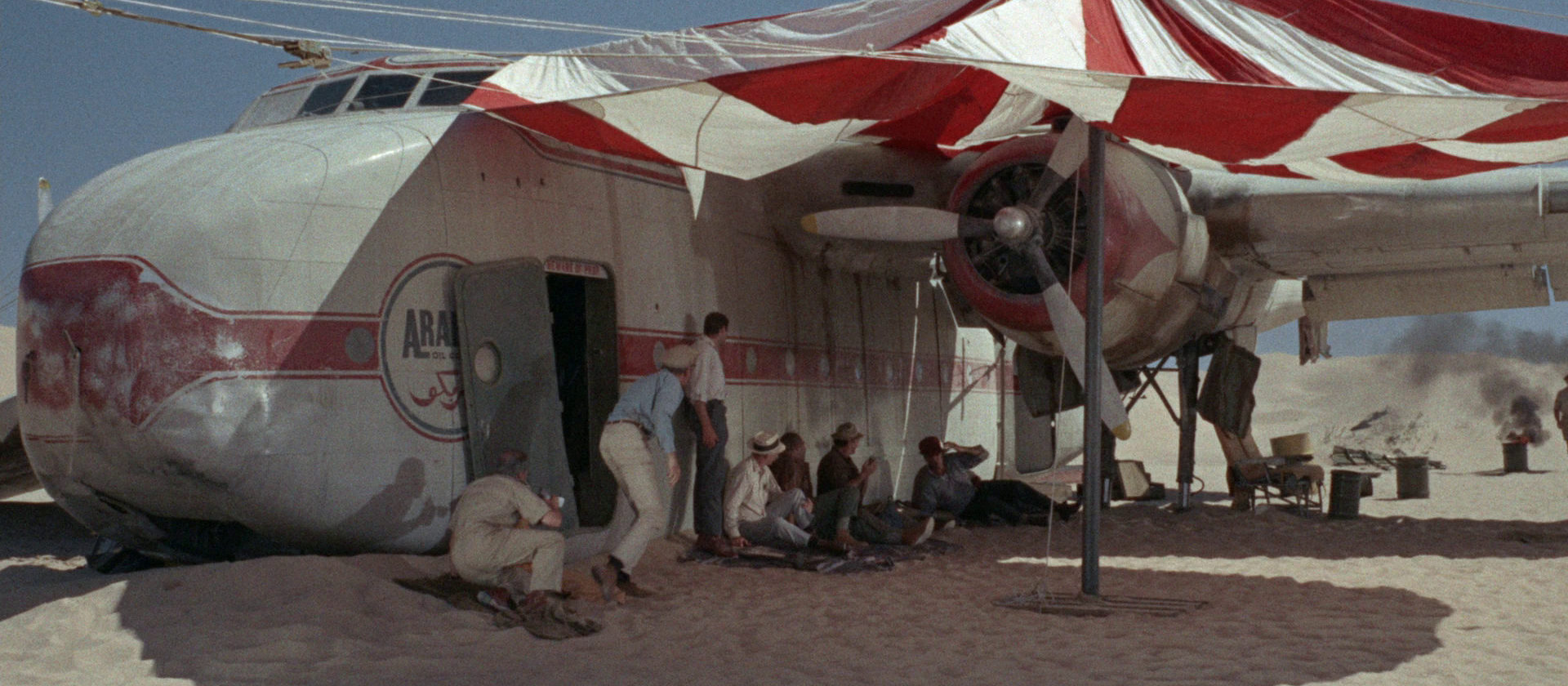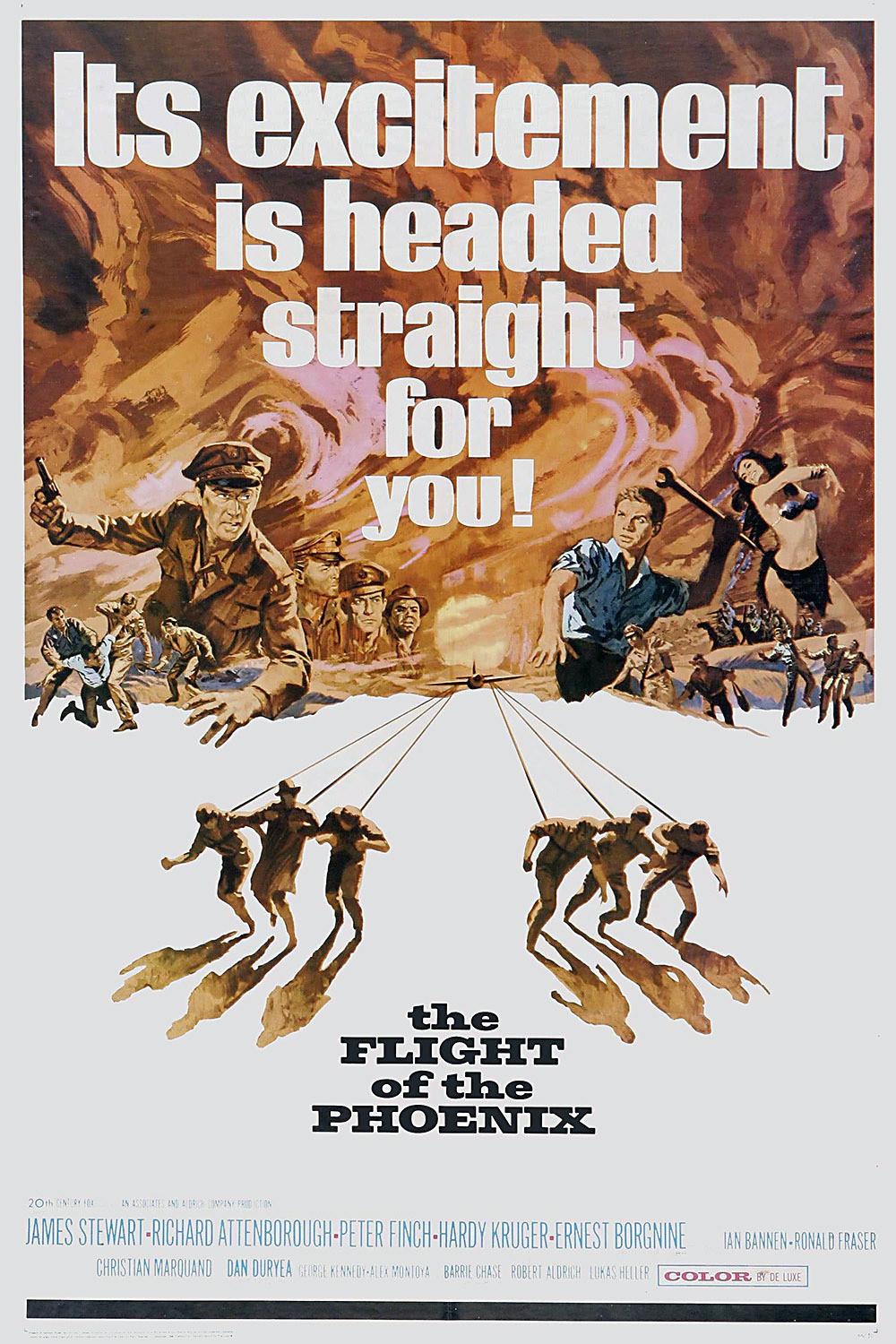

“Insurance companies move in mysterious ways. Much like God… only far less generous.”
Favoring simmering personal drama over stunts and effects, Robert Aldrich’s The Flight of the Phoenix explores the tense dynamics that develop among a hodgepodge of men who crash land an airplane in the North African Desert. With only the husk of their downed plane as shelter from the sweltering heat, the stranded men must choose to set aside their differences and collaborate, or else suffer inevitable death.
James Stewart leads the cast as Captain Towns, a cantankerous veteran war pilot who’s commissioned to fly a disparate group of men from Jaghbub to Benghazi—a routine trip that’s interrupted by a severe sandstorm that destroys one of the plane’s twin engines and forces an emergency landing hundreds of miles from the nearest watering hole, let alone civilization. They’ve got a virtually unlimited supply of pressed dates on hand, but only enough water for a little over a week. Among the survivors are co-pilot Lew Moran (Richard Attenborough), British military men Harris (Peter Finch) and Watson (Ronald Fraser), French physician Renaud (Christian Marquand), oil company bean counter Standish (Dan Duryea), mentally unstable foreman Cobb (Ernst Borgnine), aircraft engineer Dorfmann (Hardy Krüger), and several others (Ian Bannen, George Kennedy, Gabriele Tinti, Alex Montoya), including an unnamed monkey.
While the overarching drama involves Dorfmann and Towns butting heads and the cobbling together of a rickety Frankenstein aircraft—pitching Towns’ old school grit and morals against Dorfmann’s coldly logical perspective (not to mention WWII pilot Stewart against former Hitler Youth Krüger, merely two decades on from the war)—a generous number of characters are given adequate room to carve out personalities and pull the story in different directions. The cowardly Watson feigns an injury to avoid joining Harris in his ill-considered trek to the nearest oasis; a peculiar friendship develops between Carlos (Montoya) and “Ratbags” (Bannen); Cobb gleefully gives away his possessions before taking off after Captain Harris; Renaud volunteers his rudimentary understanding of Arabic when a small caravan of Bedouins settle for the night behind a nearby dune; Standish is inspired to christen the makeshift craft after the mythological bird.
Borgnine, often criticized for overacting, finds here in the childish personality of Cobb the perfect vehicle for his aggressive style. Towns and Dorfmann are both adequately multi-dimensional; totally embodied by Stewart and Dorfmann, respectively. And Attenborough turns in a stellar performance equal to his co-stars as the hard-drinking navigator who must play liaison between the two would-be authority figures.
Directed with precision and some understated flair, The Flight of the Phoenix might feel like a thematic dummy run for Aldrich’s considerably more ambitious war picture The Dirty Dozen, but then again, you can see its DNA in modern pictures to this day. The general technical aptitude of the average movie goer has plummeted since Heinlein’s slide rule days—an era of heavy industry and moon landings and a dearth of touch screens—but it’s not difficult to trace the mechanical ingenuity of Dorfmann through to the exploits of Matt Damon’s astronaut in The Martian.
With its large, well-defined, all-male ensemble and themes of disciple, honor, leadership, and the resilience of the human spirit, Aldrich’s survival film shares quite a lot in common with The Great Escape, even if it doesn’t reach the same level of nerve-wracking intensity as John Sturges’ prison escape epic.
The film is dedicated to stunt pilot Paul Mantz, who died during production while flying the “bits-and-pieces” plane assembled from wreckage.